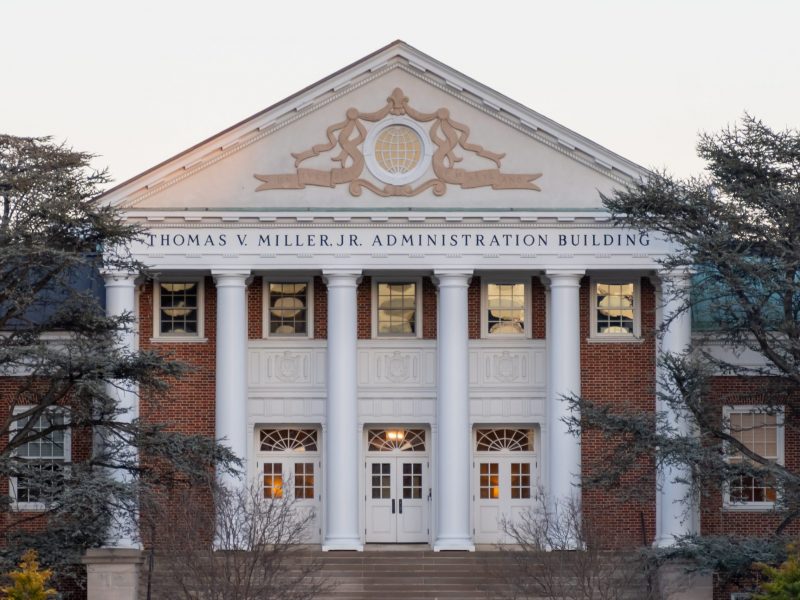
Brett Potter holds an 3-D object printed by his Readybox.
Working in the University of Maryland’s 3-D-printing lab, Terrapin Works, senior Brett Potter was surrounded by about 60 printers creating plastic objects from a digital file.
Over time, he said, he grew familiar with the problems with consumer 3-D printers: They would break, get clogged, deliver inferior products and make printing too complicated for the average user.
So Potter decided to solve the problems and design his own.
“That’s how Readybox was born,” the mechanical engineering major said. “The thing was, I ended up not just solving the problems, but adding my own innovations. I wasn’t content with just improving existing products.”
Readybox, Potter’s consumer-friendly 3-D printer, is six times faster than comparable printers and eliminates much of the work placed on users, he said. Rather than focusing on the cost of the printer, Potter said he focused on its quality — and ended up crafting a machine that was still cheaper than average.
Consumer printers tend to run at $3,000 to $6,000, Potter said. The Readybox, which can be bought on Kickstarter until November, started out at $2,500, and rose to $2,999.
READ MORE: Five UMD students launch revamped entrepreneur site VentureStorm
On Saturday, Potter launched his crowdfunding website, allowing consumers to purchase printers, which are expected to be shipped starting in early 2016. They also can donate to the cause and receive a 3-D-printed prize, such as a keychain or a ukelele. Potter reached the Kickstarter’s goal of $12,500 within the first 24 hours it was open, according to the website.
Already, a makerspace in Silver Spring that started up a few months ago purchased a Readybox from Potter, he said, to use in its studio.
“Every person that I’ve talked to with a 3-D printer has had theirs break down,” said Sam Forline, CEO of Scholar Era, the marketing firm working with Potter to market the printer. “Readybox is reliable and it’s not breaking down. We have a product that’s in high demand.”
Tony Ingelido, Terrapin Works lab coordinator, said the biggest improvement Readybox brings consumers is how big the printer is relative to the volume of the product it can produce.
“Build volume is one of the biggest factors; it’s on par with being the biggest thing people look for,” Ingelido said. “The bigger the volume, the bigger the thing you can make. Readybox can print large objects without taking up too much space — it’s good for small work environments but delivers quality products.”
READ MORE: New MakerSpace provides 3D printing and other resources for students
Ingelido said Terrapin Works plans to back one or two printers on Potter’s Kickstarter campaign, and not just because Potter has been on the lab team for about a year.
“They really are useful, quality machines,” Ingelido said. “Plus, we definitely want to support him.”
Forline, who chooses the products Scholar Era markets, said he was drawn to Readybox partly because of Potter’s ingenuity.
“He was fed up with the status quo and saw 3-D printers weren’t making the cut, so he made his own,” Forline said. “A 21-year-old kid built the fastest 3-D printer in the world. That’s really something.”


